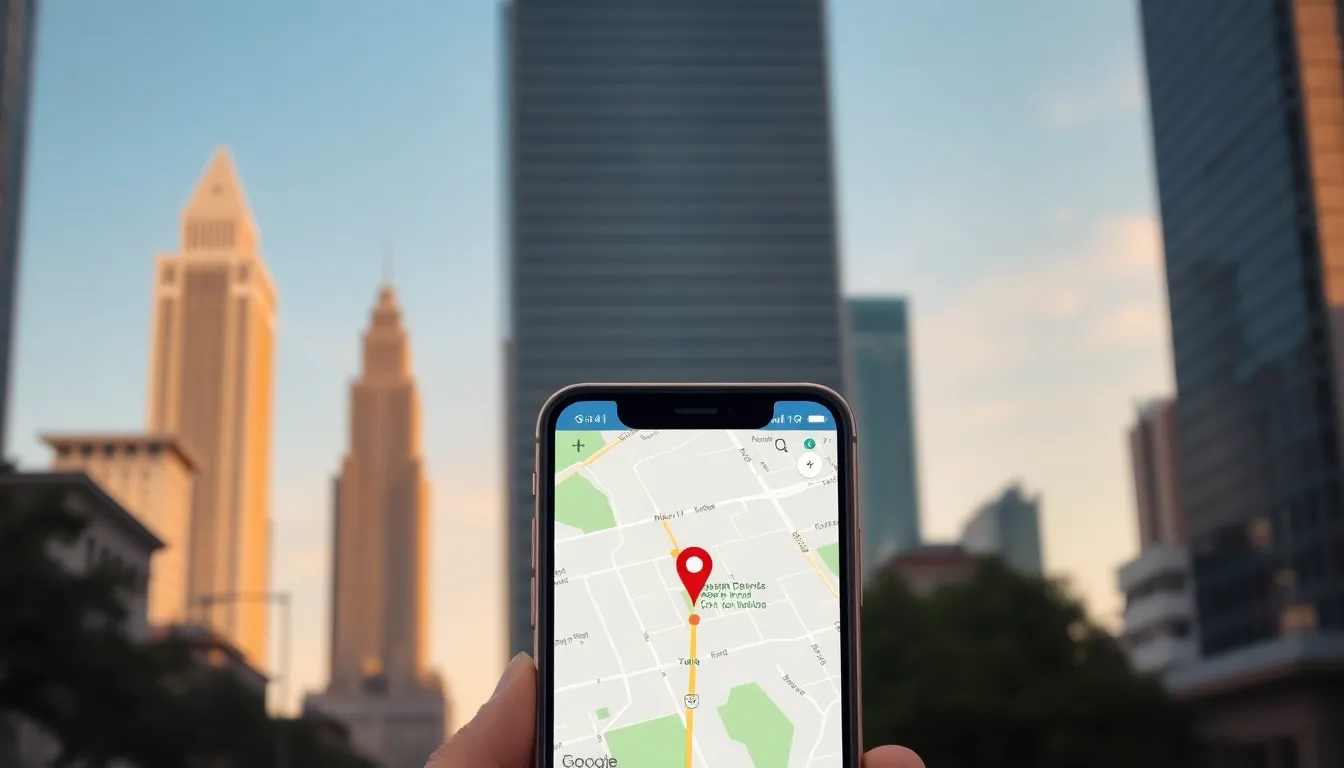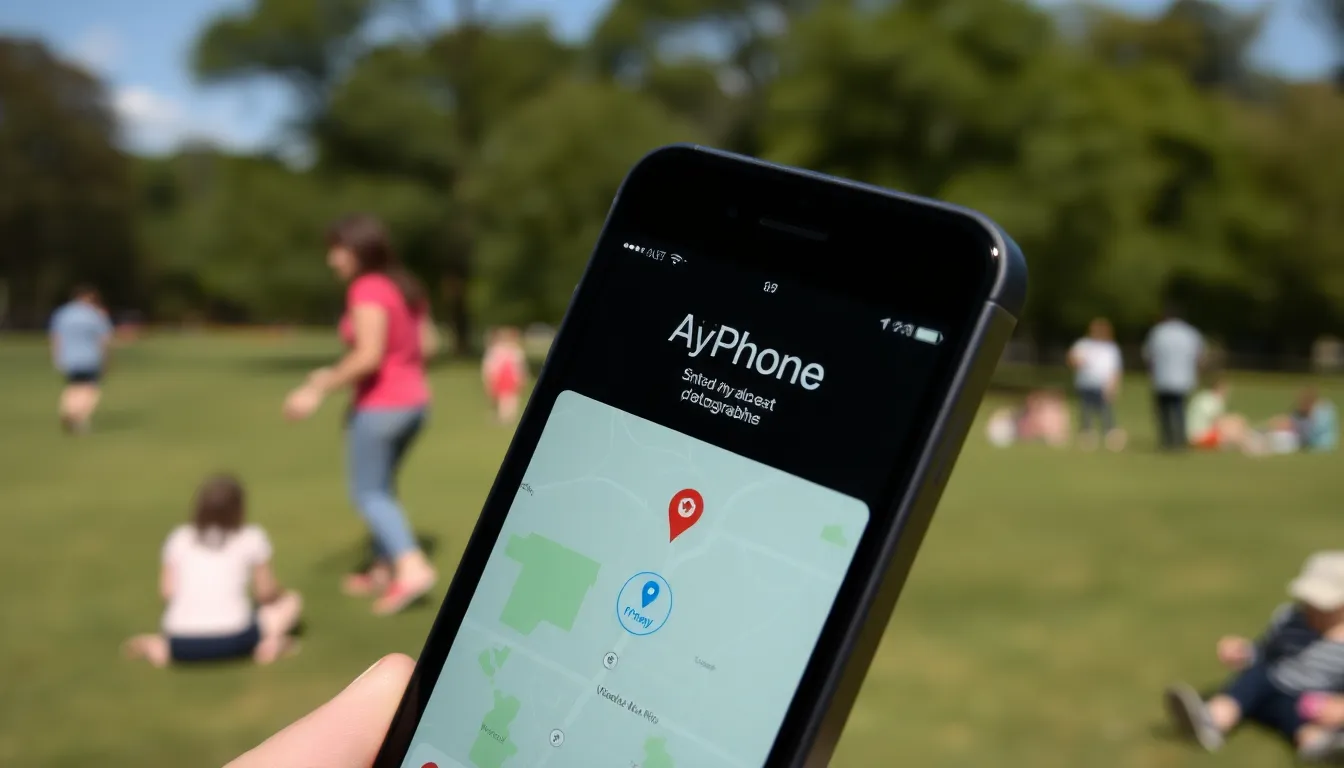Table of Contents
ToggleIn a world where losing your phone feels like losing a limb, Apple’s “Find My iPhone” is a modern-day superhero. But does it really deliver the exact location of your beloved device, or is it just a high-tech game of hide and seek? Imagine frantically searching your couch cushions while your phone is sipping a latte at the local café.
With the stakes high and the anxiety real, understanding how precise this feature is can make all the difference. Whether you’re a forgetful friend or a parent chasing down a runaway teen, knowing what to expect from “Find My iPhone” can save the day. Let’s dive into the nitty-gritty and uncover whether this tool is a reliable ally or just a fancy way to keep you guessing.
Overview of Find My iPhone
Find My iPhone serves as a valuable tool for tracking lost or stolen devices. Users rely on this feature to locate their iPhones quickly and efficiently.
Purpose of Find My iPhone
Find My iPhone helps individuals recover their devices in case of loss or theft. This tool allows users to track their iPhone’s last known location on a map. In addition, it functions seamlessly across Apple devices, ensuring a consistent experience. Parents can monitor their children’s devices and locate them in various situations, enhancing safety. The application not only assists in finding lost devices but also allows users to remotely lock or erase their information.
Features of Find My iPhone
Several features enhance the functionality of Find My iPhone. Users can access real-time location data via the Find My app or iCloud website. The “Play Sound” feature emits a loud noise, aiding in locating a misplaced iPhone nearby. Lost Mode provides an additional layer of security, allowing owners to display a custom message on their device. Users can see the battery status, indicating how much time remains before the device turns off. Lastly, the tracking capability extends to AirPods, Apple Watches, and other linked devices, providing comprehensive coverage.
Accuracy of Location Tracking

Find My iPhone employs multiple technologies to provide users with an approximate location for their devices. Understanding the systems in place helps clarify the accuracy of the tracking feature.
GPS Technology in Find My iPhone
GPS technology plays a crucial role in locating devices accurately. Satellites transmit signals to devices on Earth, allowing for precise location identification. Users can find their iPhones within a range of a few meters, depending on environmental conditions. Urban areas with tall buildings may experience signal interference, which affects accuracy. In open spaces, GPS usually delivers optimal results, ensuring users can efficiently track their devices.
Factors Affecting Location Accuracy
Several factors influence the accuracy of Find My iPhone. Obstructions like buildings and trees can disrupt GPS signals. Additionally, device settings, such as location services being turned off, directly impact tracking capabilities. Network connectivity also affects accuracy; Wi-Fi and cellular data enhance location precision. Users in remote areas might experience less reliable tracking due to limited network access. Understanding these factors helps set realistic expectations regarding the feature’s effectiveness.
User Experience and Feedback
User experiences with Find My iPhone vary widely, highlighting both strengths and weaknesses of this feature.
Real-Life Use Cases
Families frequently use Find My iPhone to locate children during outings. Parents appreciate the peace of mind when they track their children’s devices in public places. Users also find it helpful for recovering lost phones in community centers or cafes. Many share success stories of recovering stolen devices using the feature while the device was in Lost Mode. Travel enthusiasts rely on this tool to locate iPhones left behind in hotels, ensuring they can quickly retrieve their belongings.
Common User Concerns
Despite its advantages, users often express concerns about accuracy. Many report discrepancies in location tracking due to obstructions like buildings or poor network connectivity. Confusion arises when the location appears significantly off, leading to frustration. Battery life plays a critical role; if the battery is low, Find My iPhone may provide outdated information. Users also mention the limitations of tracking devices without a data connection, which can hinder usability. These common issues emphasize the importance of understanding how environmental factors influence the tracking performance of the feature.
Comparison with Other Location Services
Find My iPhone offers unique features compared to other location services. Accuracy levels can differ significantly between this Apple tool and Google Maps.
Find My iPhone vs. Google Maps
Find My iPhone focuses specifically on locating Apple devices. Users often find it more effective for tracking lost iPhones, thanks to its integration with iCloud. Google Maps, in contrast, primarily guides users in navigation. This service provides real-time location sharing through accounts but isn’t tailored for device recovery. Find My iPhone excels in Lost Mode, allowing users to lock their devices remotely. Users of Google Maps may encounter limitations when seeking lost devices, as it doesn’t offer the same security features.
Find My iPhone vs. Other Competitors
Find My iPhone stands out against competitors like Life360 and Tile. While Life360 provides family location tracking and emergency alerts, it lacks the robust device recovery options available in Find My iPhone. Tile relies on Bluetooth technology for tracking, limiting distance capabilities to close proximity. Find My iPhone utilizes GPS, making it more reliable for pinpointing device locations even far away. Compared to these services, users appreciate Find My iPhone’s seamless functionality across the Apple ecosystem.
Find My iPhone stands out as a powerful tool for tracking lost or stolen devices within the Apple ecosystem. While it offers impressive features like real-time location tracking and Lost Mode, users should remain aware of factors that can affect accuracy. Environmental obstructions and network connectivity can lead to discrepancies in location data.
Despite these challenges many users find comfort in its capabilities, especially when it comes to keeping track of loved ones. Understanding its limitations and strengths allows users to maximize the benefits of this feature. Ultimately, Find My iPhone proves to be a valuable resource for those seeking peace of mind in an increasingly connected world.





